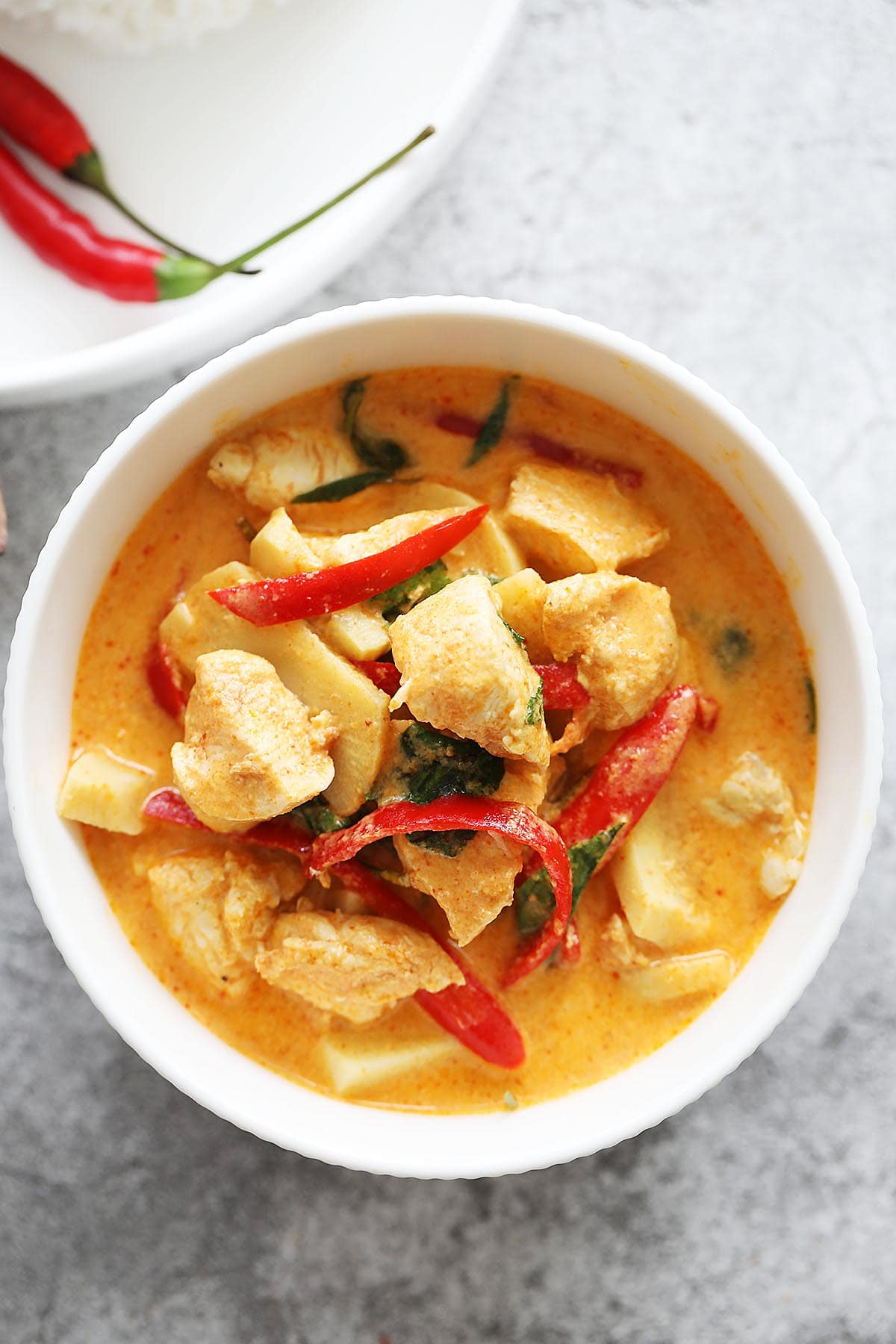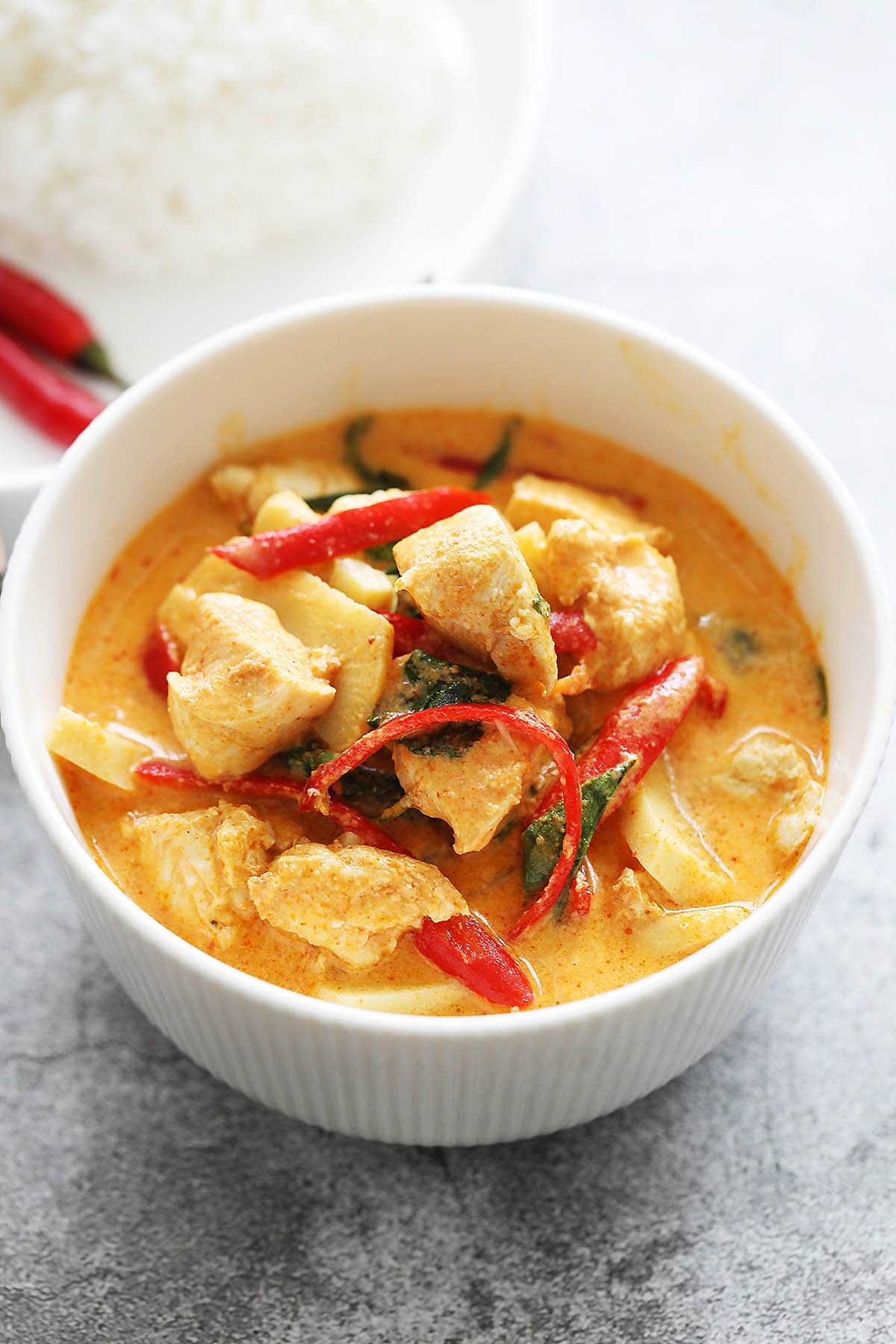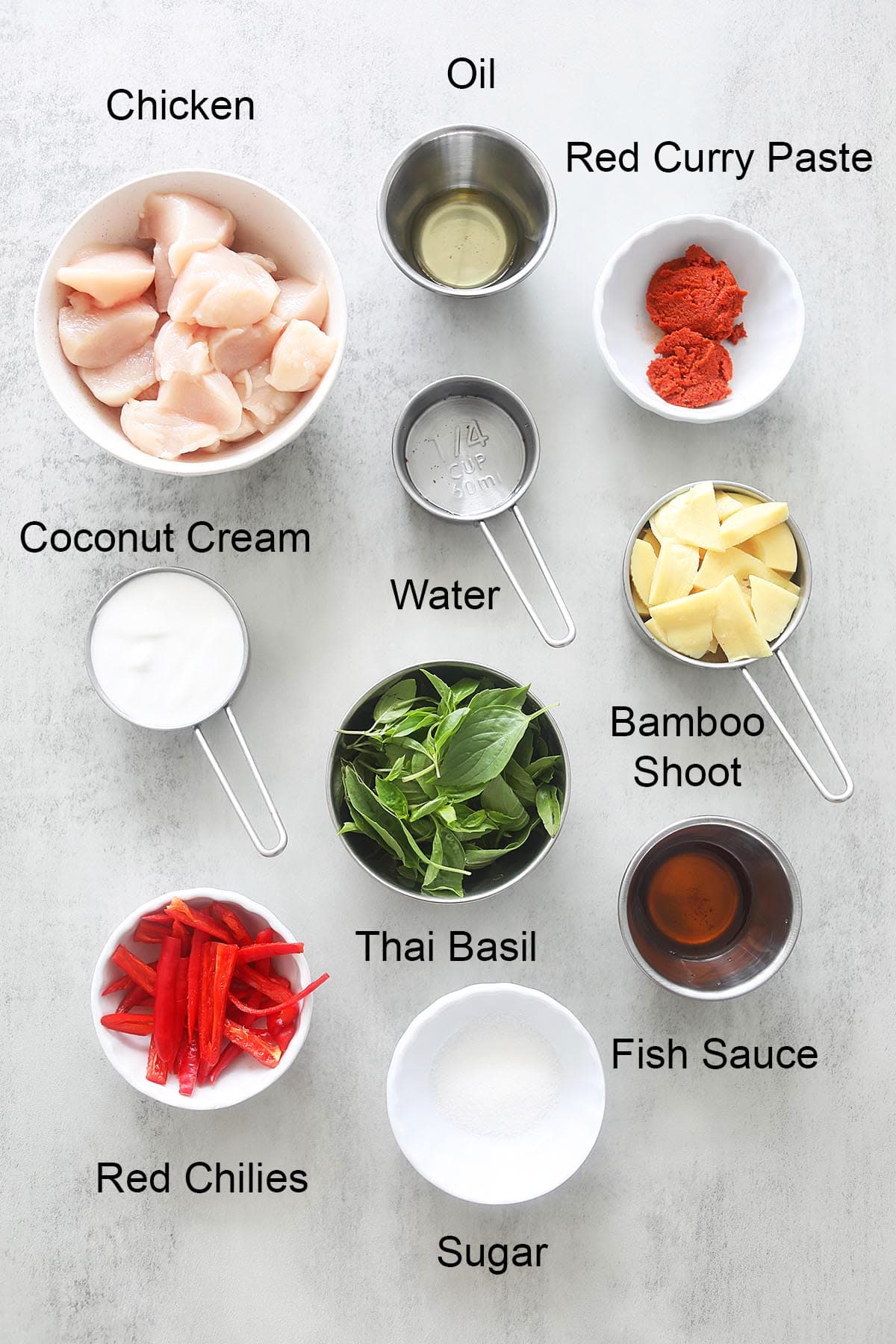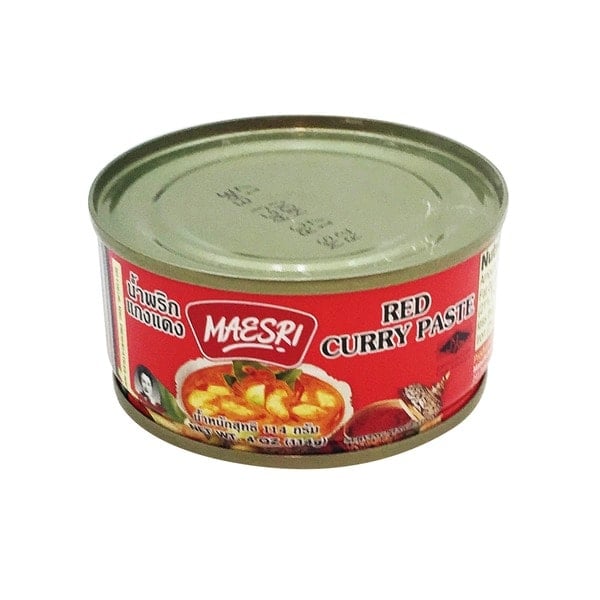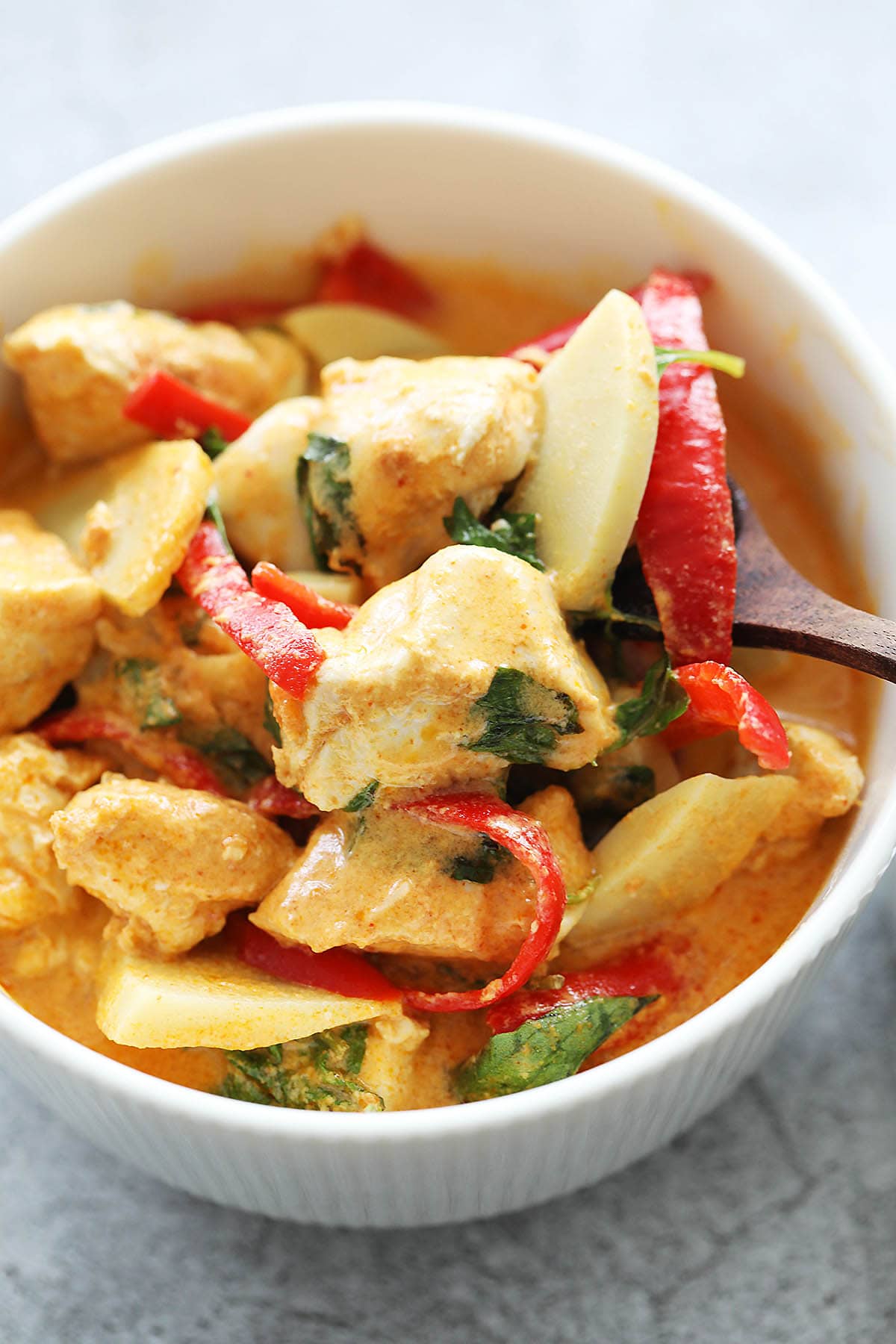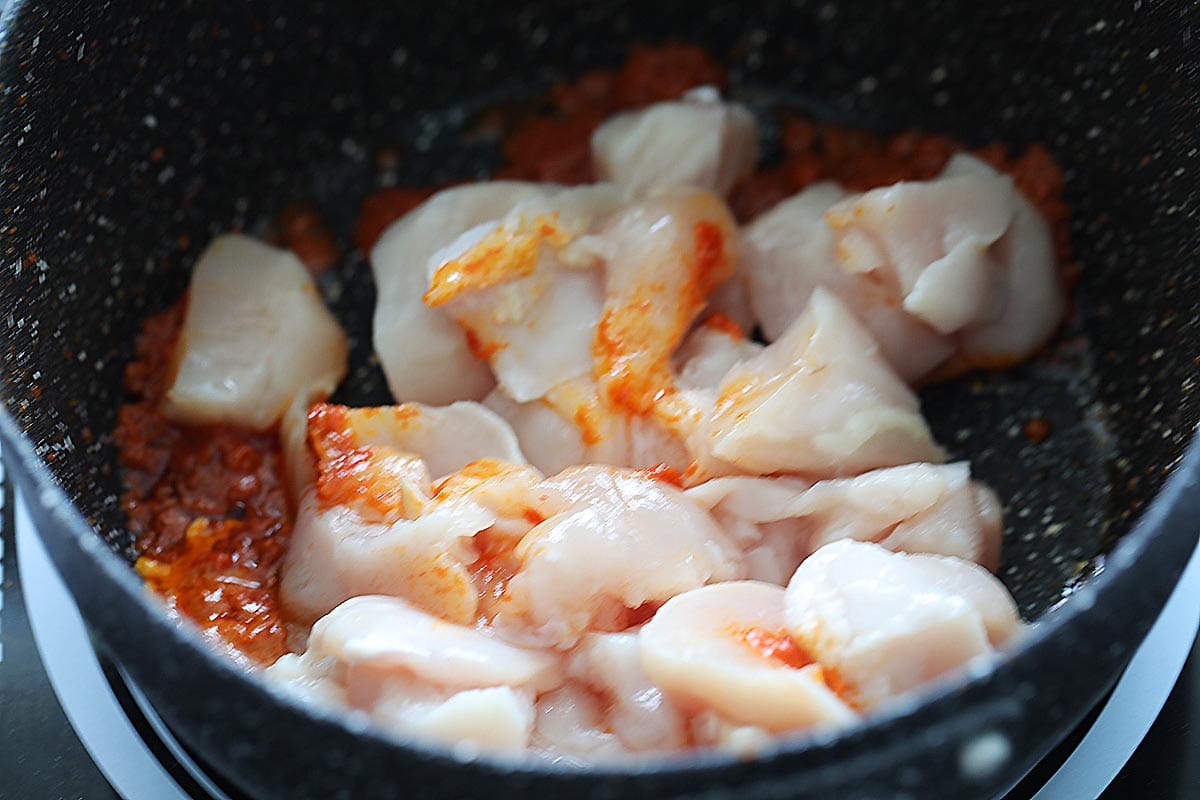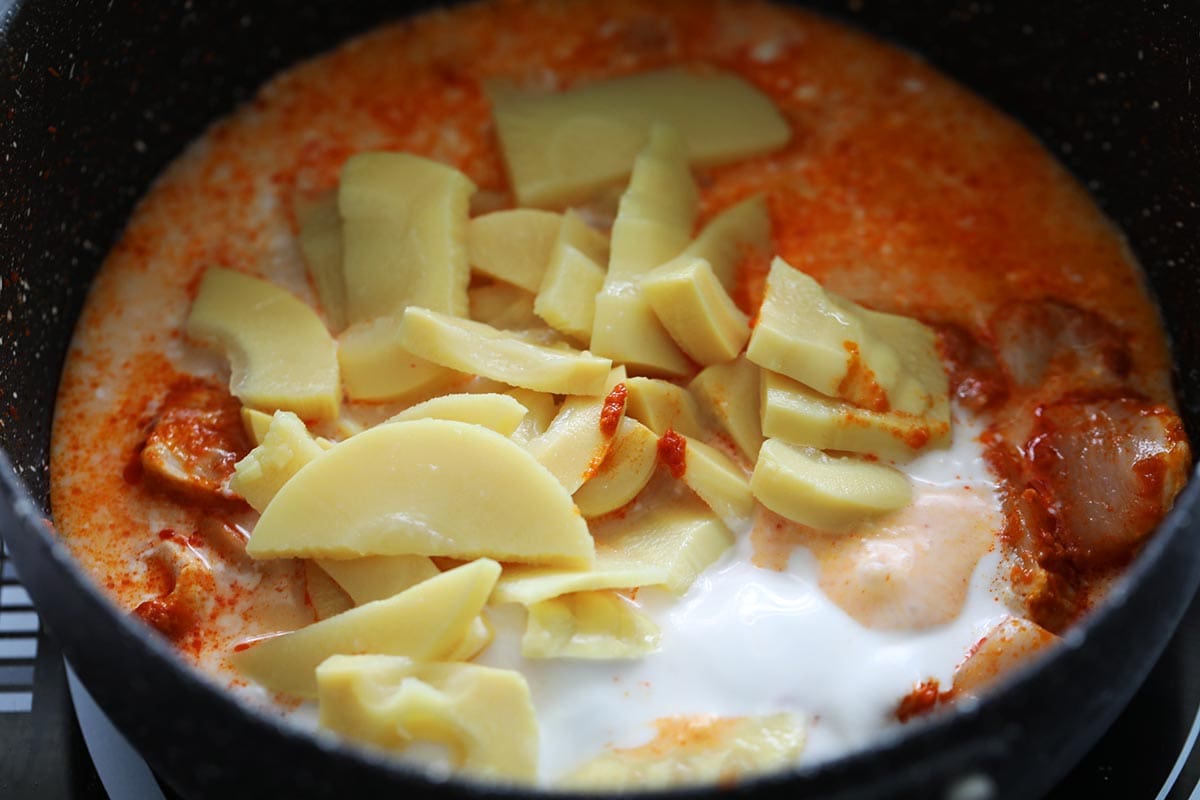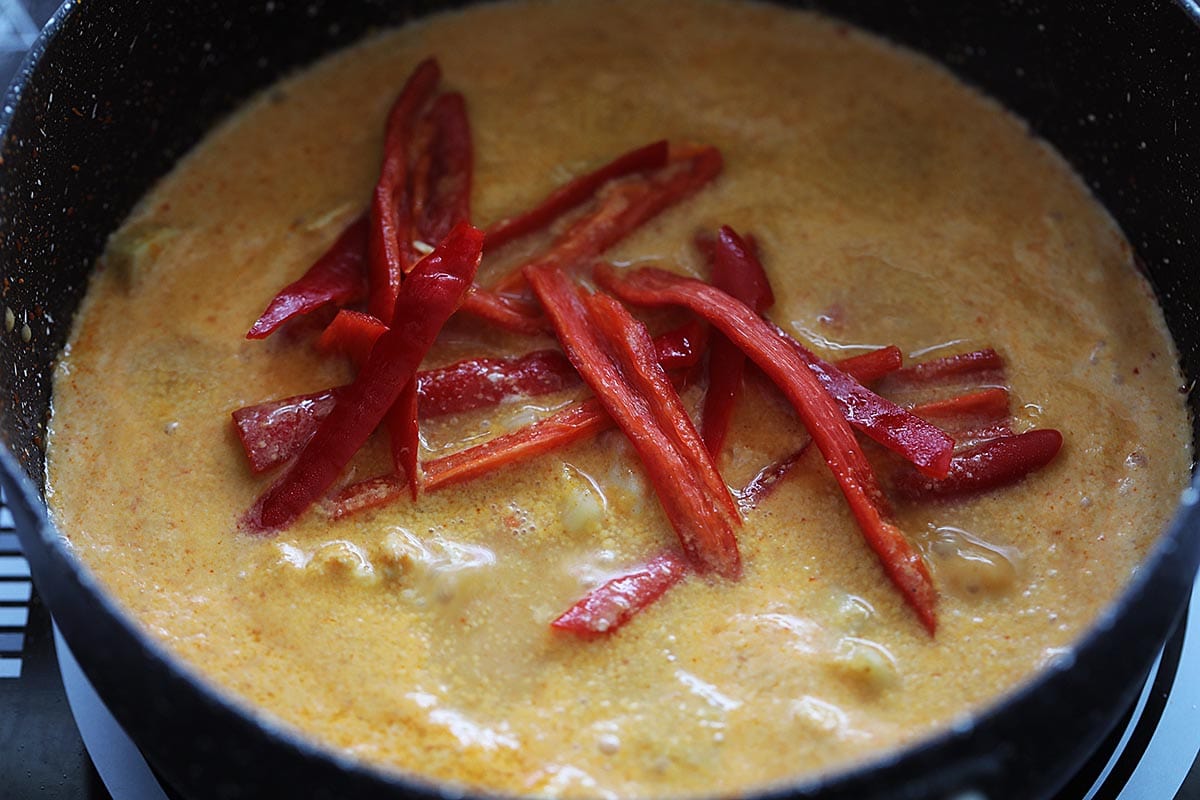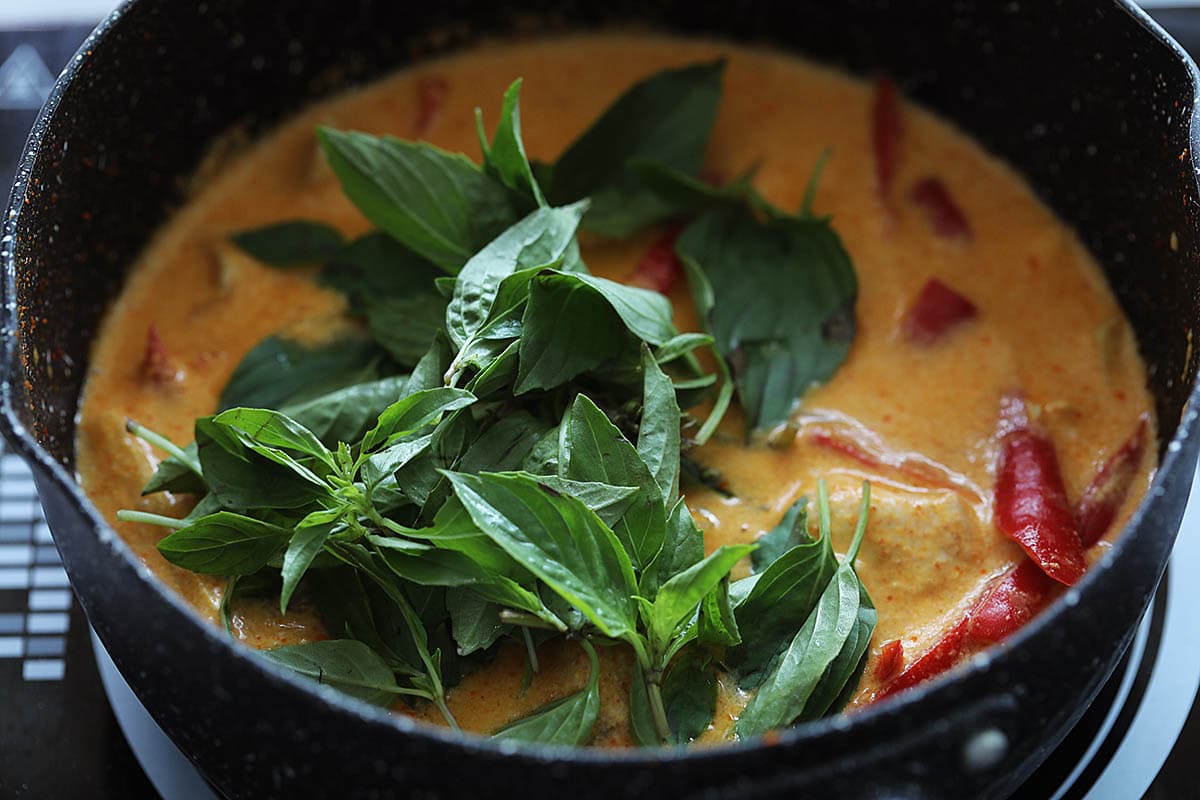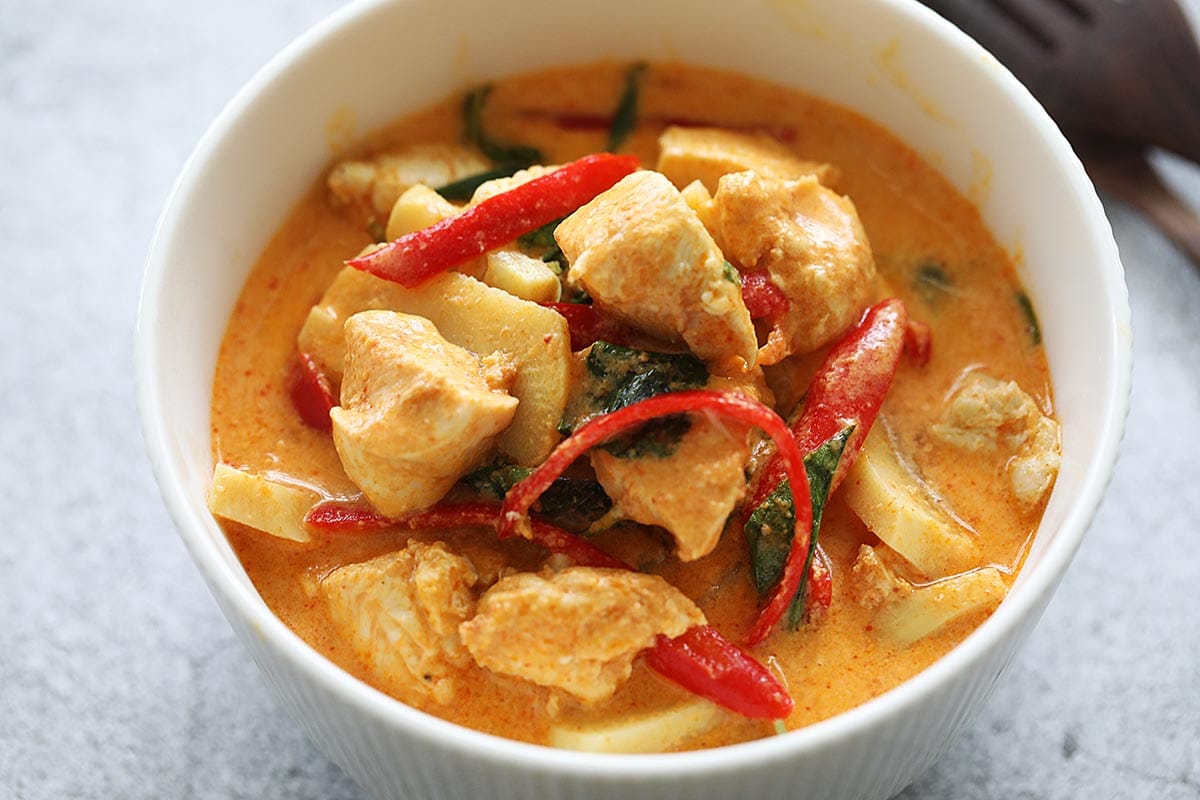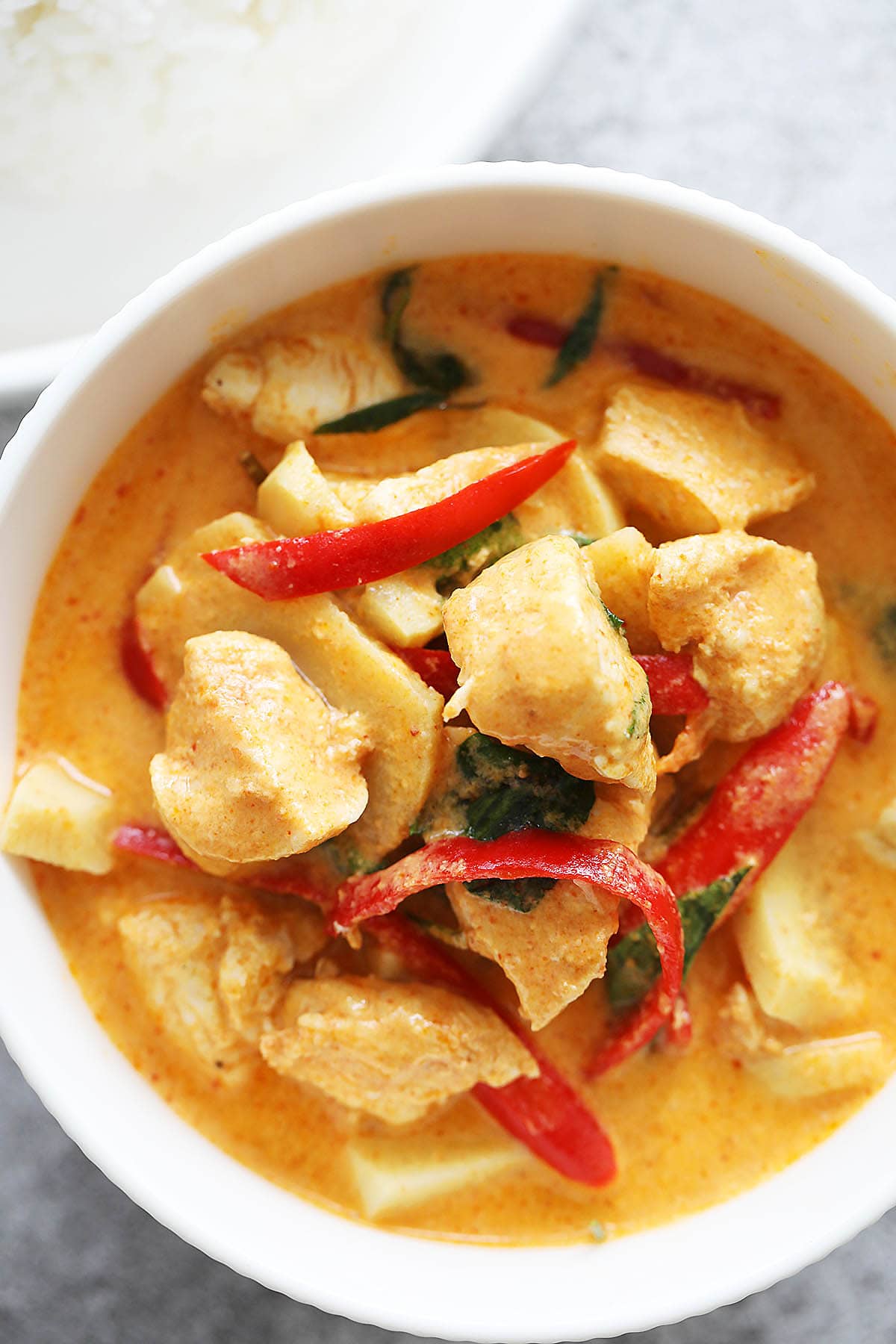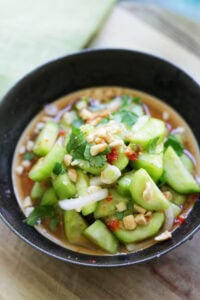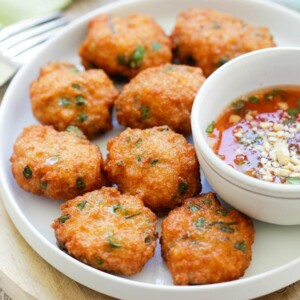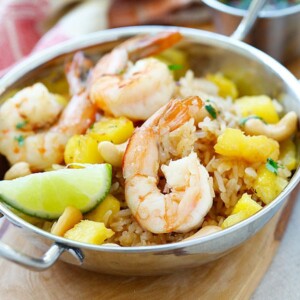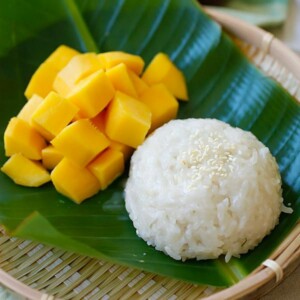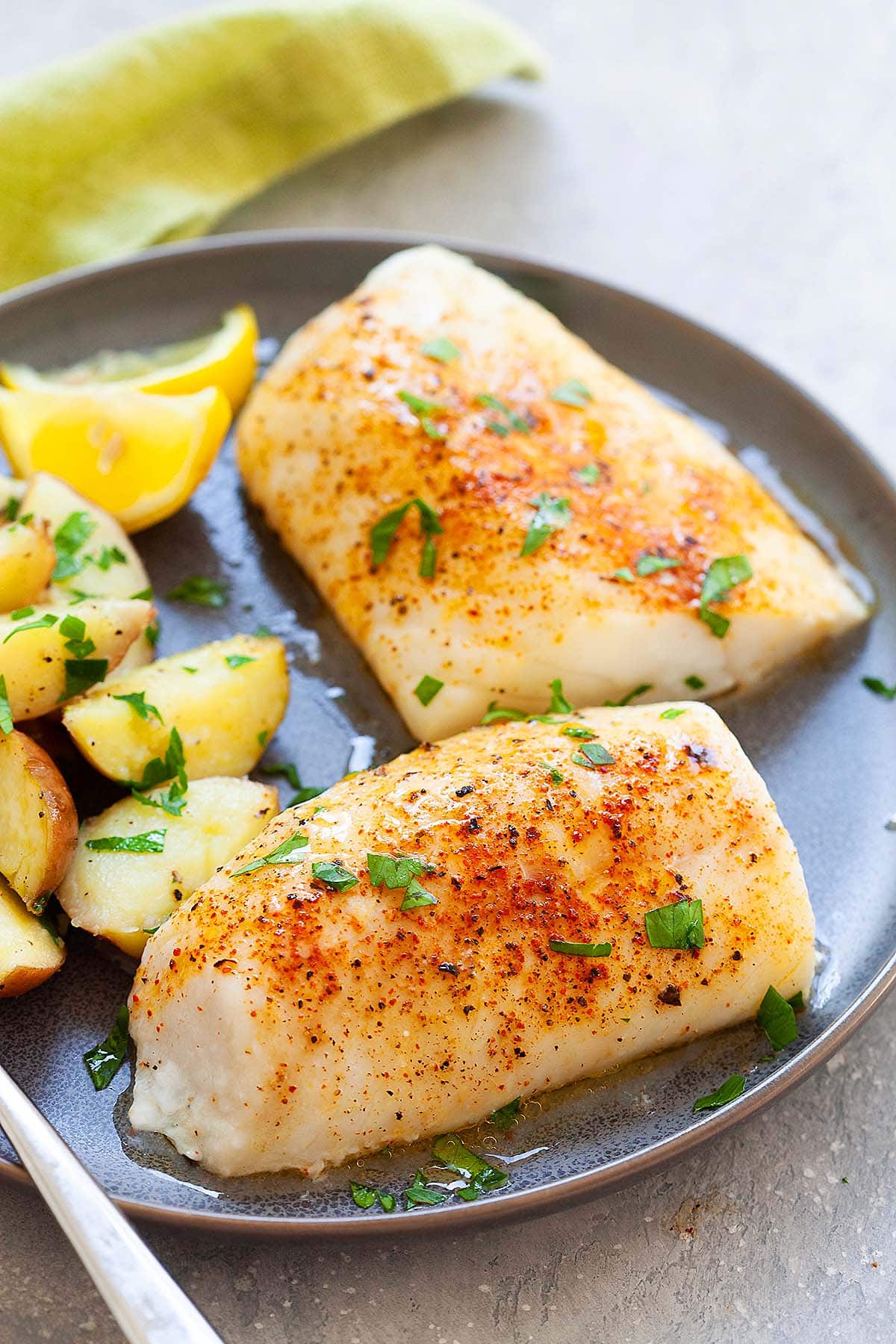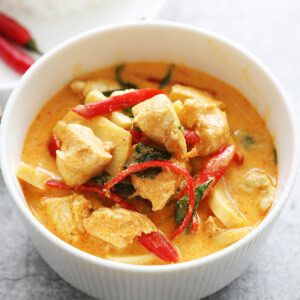Published Aug 08, 2024 Thai red curry is my favorite Thai curry. The inviting red color is just the beginning—I absolutely love the rich taste and the blend of ingredients in the curry paste. Common proteins for Thai red curry include chicken, beef, shrimp, pork, scallops, and mussels, or any combination of them. For example, if you’re a pescatarian, you can create a recipe with shrimp, scallops, and mussels. Regardless of the protein choice, each adds its own unique flavor to the rich, creamy, and utterly delicious sauce. It’s incredibly tasty when served with steamed rice.
Why You’ll Love Thai Curry
Thailand offers a range of curries; other than red curry recipe, there is Green Curry (herbal and spicy), Yellow Curry (mild and aromatic), Massaman Curry (rich and nutty), Panang Curry (creamy and mildly sweet), and Jungle Curry (spicy and less creamy). Each curry features distinct flavors and ingredients, showcasing the regional diversity of Thai cuisine. I love Thai curries for several reasons:
Easy and Quick: You only need a small pot, and it takes less than 20 minutes from prep to dinner table. Accessible Ingredients: Store-bought curry paste is readily available, so you don’t have to go to specialized Asian food stores. Creamy and Delicious: The curry sauce combines spicy, sweet, salty, and sometimes sour flavors, making it perfect with steamed jasmine rice. Balanced Meal: Thai curries often include vegetables, making them a well-rounded meal. With just one dish, you get a complete and wholesome meal.
Thai Red Curry Recipe – Ingredients
Making Thai food is easier than you think! You can find all the ingredients at Asian food stores or in the ethnic aisle of your regular supermarket.
Chicken – You can use chicken breast, chicken thighs, or a combination of both. However, I prefer the meat to be skinless and boneless. Red Curry Paste – This is the most important ingredient in the recipe. In Thailand, freshly made red curry paste is available at local wet markets, but store-bought red curry paste is equally authentic and very accessible. Coconut Cream or Coconut Milk – I prefer using coconut cream for a richer and creamier curry. If you use coconut cream, you will need to add more water to the recipe. Bamboo Shoots – In Thailand, red curry typically includes vegetables like Thai eggplants, green or red bell peppers, baby corn, bamboo shoots, carrots, and green beans. For this red Thai curry, I opted for canned bamboo shoots. Be sure to buy sliced bamboo shoots instead of strips, or purchase whole bamboo shoots and slice them yourself. Red Chilies – I used a combination of red Thai chilies (spicy!) and regular red chilies. The Thai chilies add heat, while the regular red chilies contribute color and texture. Thai Basil – Also known as purple basil, it features purple stems and adds a slightly spicy, anise-like flavor, giving the curry a distinct aroma. Fish Sauce – Adds a salty and umami note to the curry. Sugar or Thai Palm Sugar – Red Thai curry chicken is traditionally sweetened with Thai palm sugar, but white or brown sugar works well in a home kitchen.
Sidenote: Thai eggplants are small, round, and typically green or purple, with a slightly bitter taste and firm texture that holds up well in curries. If you can find them, consider using Thai eggplants instead of bamboo shoots. Shopping Tips: Red curry paste is typically available in small round cans or larger plastic tubs. I usually buy the small can unless you plan to make Thai curries regularly. Once opened, transfer any unused paste to a small airtight container and keep it in the fridge for up to a few weeks. I recommend the Maesri brand red curry paste, as pictured above.
Red Curry Vs. Green Curry
If you’re diving into Thai curries, you’ll find that Red Curry and Green Curry are totally different. Red curry has a rich, slightly sweet flavor thanks to the red chilies and spices in the paste. It’s usually a bit milder in terms of heat and goes really well with veggies like bamboo shoots, bell peppers, or Thai eggplants. Green curry, on the other hand, is spicier due to the green chilies and has a fresh, herbal kick from ingredients like Thai basil. Its vibrant green color comes from the green curry paste, and it often includes veggies like Thai eggplants and baby corn. Both curries are fantastic, but each brings its own unique flavor and heat to the table!
How To Make Red Curry
Making chicken red curry is a breeze. With just 4 easy steps and 20 minutes, you’ll have a delicious dinner ready in no time.
Cooking Tips For Authentic Red Curry
To make a rich, creamy, and authentic red curry, use the following ingredients:
What To Serve With Thai Red Curry
Thai red curry is best served with steamed jasmine rice, which complements its rich, creamy sauce perfectly. For a wholesome Thai meal at home, I recommend the following recipes. I hope you enjoy this post as much as I do. If you try my recipe, please leave a comment and consider giving it a 5-star rating. For more easy and delicious recipes, explore my Recipe Index, and stay updated by subscribing to my newsletter and following me on Facebook, Pinterest, and Instagram for new updates.
Other Recipes You Might Like
If you love curries, you will love these Asian curry recipes, each with its own unique taste and distinct flavors:
Malaysian Chicken Curry Chicken Rendang Vietnamese Chicken Curry Indian Chicken Curry

